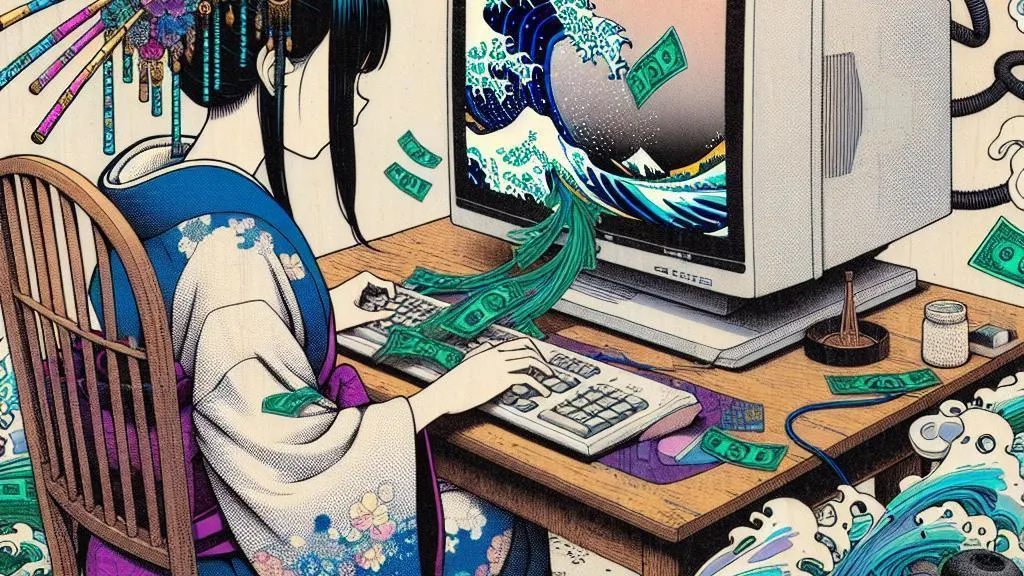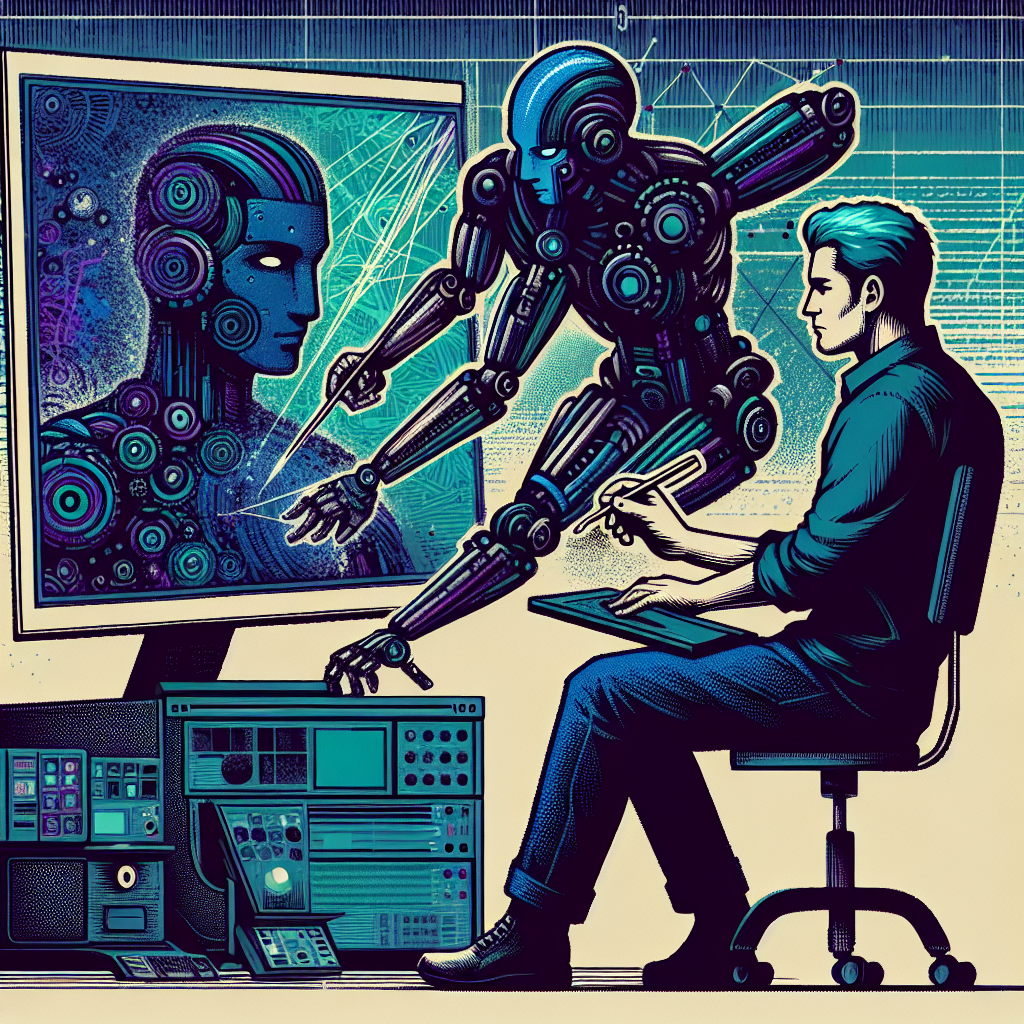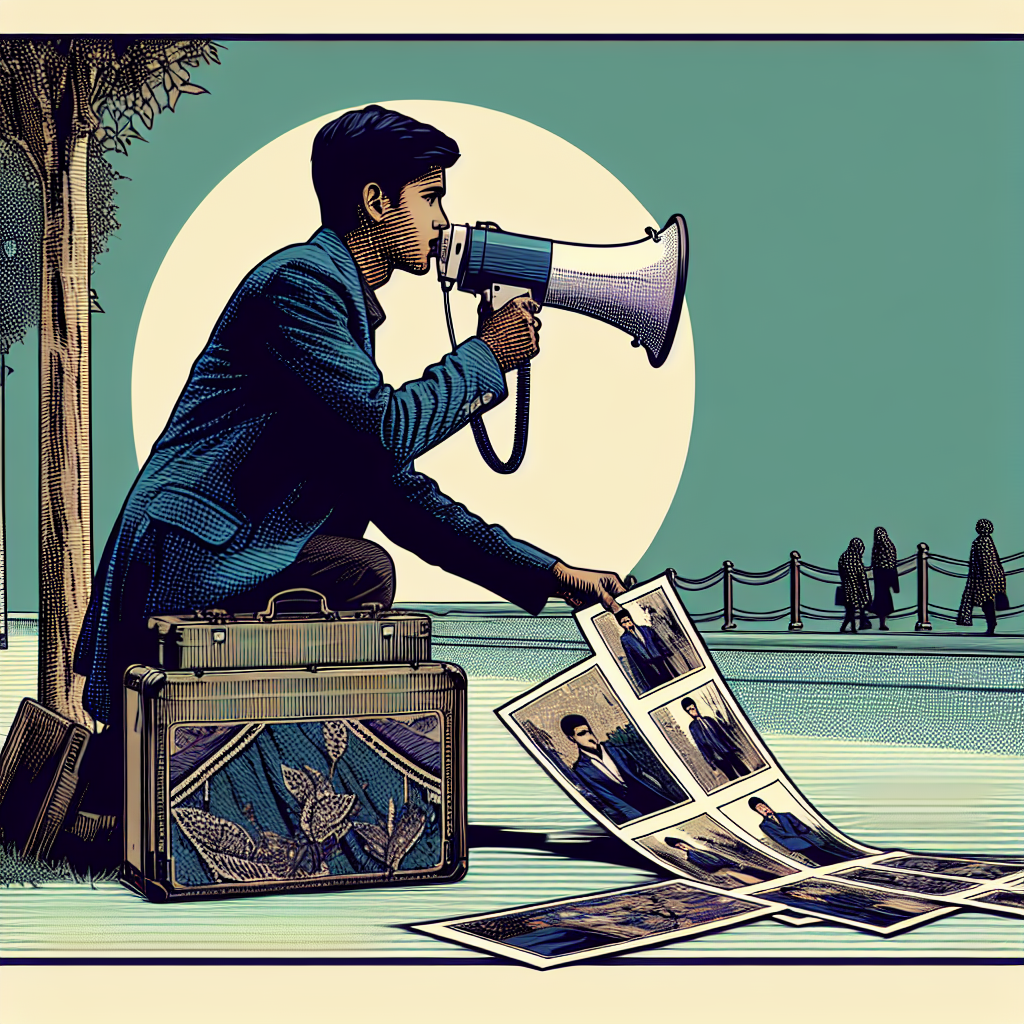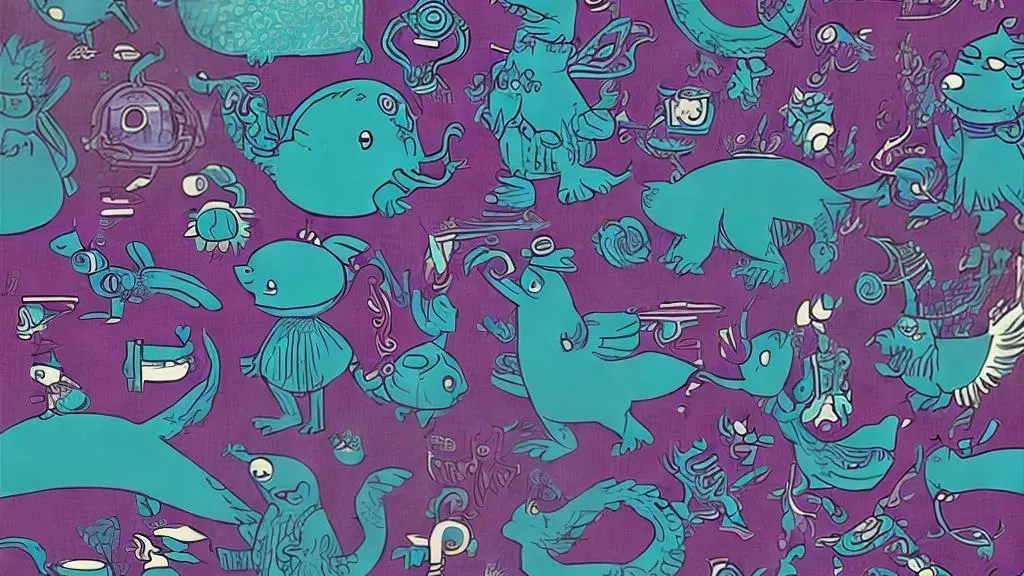How will AI make my work day faster?
As a business owner or executive juggling multiple responsibilities and constantly seeking ways to

Images, created using advanced algorithms and machine learning techniques, are revolutionising how we perceive and interact with visual content. As the technology behind AI-generated images continues to advance, it has opened up many opportunities for individuals to monetise their creations. In this blog post, we will delve into the fascinating world of AI-generated images, explore the various monetisation strategies, and provide a comprehensive guide on how to turn your AI-powered creations into a profitable venture.
To grasp the full potential of AI-generated images, it is essential to understand what they are and how they are created. AI-generated images result from sophisticated algorithms and machine learning models trained on vast images and text datasets. These models, such as deepfakes and generative adversarial networks (GANs), learn to associate words and phrases with visual concepts, enabling them to generate highly realistic and unique images based on given prompts or parameters.
Deepfakes, for instance, utilise deep learning techniques to create convincing manipulations of existing images or videos, often seamlessly replacing one person's face with another. On the other hand, GANs consist of two competing neural networks – a generator and a discriminator. The generator creates new images while the discriminator evaluates their authenticity, resulting in a continuous feedback loop that refines the quality of the generated images over time.
The advancements in AI image generation have created stunningly realistic and imaginative visuals, blurring the lines between reality and artificial creation. As the technology continues to evolve, the possibilities for AI-generated images are virtually endless, opening up exciting avenues for monetisation.

Now that we have a solid understanding of AI-generated images let's explore how you can monetise your creations.
One of the most straightforward ways to monetise your AI-generated images is by selling them on popular stock photo websites such as Shutterstock, Getty Images, and Adobe Stock. These platforms have a vast user base of businesses, marketers, and individuals constantly searching for high-quality visual content. By uploading your AI-generated images to these websites, you can tap into this demand and earn money each time someone licenses or downloads your pictures.
Another lucrative avenue for monetising AI-generated images is through print-on-demand products. Platforms like Redbubble and Etsy allow you to create unique designs using your AI-generated pictures and sell them on various products, such as t-shirts, mugs, phone cases, and more. The beauty of print-on-demand is that you don't need to hold any inventory – the platform handles the printing and shipping of the products while you earn a commission on each sale.
If you have a knack for creating AI-generated images catering to specific themes or styles, offering custom commissions can be highly profitable. Many businesses and individuals are willing to pay top dollar for unique, tailor-made visuals that align with their brand or personal preferences. By establishing yourself as a skilled AI image creator and building a solid portfolio, you can attract clients looking for one-of-a-kind images for their projects.
Licensing your AI-generated images for commercial use is another way to generate a steady income stream. Businesses and individuals wishing to use your photos for their products, marketing materials, or other commercial purposes can license them. By setting up clear licensing terms and fees, you can control how your images are used and ensure you receive fair compensation for your work.
The rise of non-fungible tokens (NFTs) has opened up a new frontier for monetising digital art, including AI-generated images. NFTs are unique digital assets stored on a blockchain, providing proof of ownership and authenticity. By creating and selling your AI-generated images as NFTs on platforms like OpenSea or Rarible, you can tap into the growing market of collectors and enthusiasts willing to pay premium prices for one-of-a-kind digital artworks.
As the interest in AI-generated images grows, there is a significant demand for knowledge and expertise. Creating and selling online courses or tutorials that teach others how to create and manipulate AI-generated photos can be highly lucrative. By sharing your skills and insights, you can build a community of learners and earn money through course sales, memberships, or subscriptions.
Writing an eBook or starting a blog dedicated to AI-generated images can effectively establish yourself as an authority in the field while generating passive income. By providing valuable content, tips, and tutorials, you can attract a dedicated audience of readers interested in learning more about AI image generation. You can monetise your eBook or blog through advertisements, affiliate links, or promoting your products and services.
For those with a technical background, developing and selling AI-powered software that simplifies creating and editing AI-generated images can be highly profitable. By creating user-friendly tools that enable others to generate stunning visuals quickly, you can tap into the growing demand for AI image-generation solutions and earn money through software sales, subscriptions, or licensing fees.
As businesses and individuals increasingly recognise the potential of AI-generated images, there is a growing need for expert guidance and consulting services. By positioning yourself as an AI image generation consultant, you can offer your expertise to companies or individuals looking to incorporate AI-generated visuals into their projects or campaigns. This can involve providing strategic advice, helping with image creation and curation, or offering training and workshops on AI image generation techniques.
Social media platforms have become powerful tools for showcasing and promoting AI-generated images. By building a strong presence on platforms like Instagram, Twitter, or TikTok, you can establish yourself as an influencer in the AI image generation space. As your following grows, you can monetise your influence through sponsored content, affiliate marketing, or promoting your products and services related to AI-generated images.
To successfully monmonetiseur AI-generated images, it is crucial to have a solid understanding of the creation process. While the exact steps may vary depending on the tools and platforms you use, here is a general overview of how to create AI-generated images:
Numerous AI image-generation tools are available, each with its strengths and capabilities. Some popular options include DALL-E, Midjourney, and Stable Diffusion. Research and compare different tools to find the best one that best suits your needs and skill level.
AI image generation models require a large dataset of images and associated text descriptions to learn from. Depending on your chosen tool, you may need to curate and prepare your trainiutilise or utilize pre-existing datasets. Ensure that your training data is diverse, high-quality, and relevant to the images you want to generate.
Once your training data is ready, it's time to train the AI model. This process involves feeding the data into the model and allowing it to learn the patterns and associations between the images and text descriptions. The training process can be computationally intensive and mspecialisedspecialized hardware, such as GPUs, to accelerate the learning process.
After the AI model has been trained, you can start generating images by providing it with text prompts or parameters. Experiment with different prompts and settings to create various unique and captivating visuals. Remember that the quality and coherence of the generated images will depend on the strength of your training data and the sophistication of the AI model.
Once you have generated a set of images, you may need to perform post-processing and refinement to enhance their quality and appeal. This can involve cropping, resizing, colour correction, or adding special effects. Use image editing software or built-in tools the AI image generation platform provides to fine-tune your creations.
When creating AI-generated images, it is essential to be mindful of image copyright and licensing considerations. Ensure you have the rights and permissions to use any pre-existing photos or data in your training set. Additionally, communicate the licensing terms and usage rights for the AI-generated images you create to avoid any legal issues down the line.

Creating stunning AI-generated images is only half the battle – to sumonetisely monetize your creations, you need to market and promote them to potential buyers and clients effectively. Here are some strategies to help you get started:
Leverage the power of social media platforms to showcase your AI-generated images and engage with your audience. Create dedicated accounts on Instagram, Twitter, and Facebook platforms, and consistently post your best work. Use relevant hashtags, participate in community discussions, and collaborate with other creators to expand your reach.
Collaborating with influencers in art, design, or technology can help you gain exposure to a broader audience. Reach out to influencers whose style and values align with your own and propose a collaboration, such as featuring your AI-generated images in their content or creating a joint project.
Selling your AI-generated images on online marketplaces like Etsy, Creative Market, or Society6 can help you reach a targeted audience of buyers specifically looking for unique and creative visuaOptimiset. Optimize your product listings with compelling descriptions, high-quality images, and relevant keywords to improve their discoverability.
A dedicated website or online portfolio is essential for showcasing your AI-generated images and establishing your brand. Use a clean and visually appealing design to highlight your best work, and include detailed information about your creative process, services, and contact details. Regularly update your portfolio with new images and projects to keep it fresh and engaging.
Building an email list of subscribers interested in your AI-generated images can be a powerful way to promote your work and keep your audience engaged. Offer a newsletter signup on your website or social media profiles, and send regular updates featuring your latest creations, behind-the-scenes insights, or special promotions.
Engage with the AI image generation community by participating in forums, attending conferences or workshops, and connecting with other creators and enthusiasts. Building relationships and collaborating with others in the field can lead to new opportunities, partnerships, and exposure for your work.
Building a solid brand and audience for your AI-generated images takes time and effort. Consistently create high-quality work, engage with your audience, and adapt your marketing strategies based on what resonates with your target market.
As with any powerful technology, using AI-generated images has ethical considerations that must be addressed. One of the most significant concerns is the potential for misuse, particularly in the case of deepfakes. Deepfakes can be used to create convincing manipulations of images or videos, which can be used for malicious purposes such as spreading misinformation, harassment, or fraud.
As a creator of AI-generated images, using the technology responsibly and ethically is crucial. This means being transparent about the nature of your creations, clearly labelling them as AI-generated, and not using them to deceive or mislead others. It also means respecting the privacy and consent of individuals whose likenesses may be used in your training data or generated images.
When monetising AI-generated images, it is essential to consider their potential impact on real artists and creators. While AI-generated images can be a powerful tool for inspiration and creativity, they should not be used to replace or undermine the work of human artists. Strive to create AI-generated images that complement and enhance human creativity rather than compete with it.
Finally, stay informed about the latest developments and discussions around the ethics of AI-generated images. As technology continues to evolve, new ethical considerations may arise, and it is essential to adapt your practices accordingly.
The world of AI-generated images is a fascinating and rapidly evolving landscape, offering countless opportunities monetisationtion and creative expression. You can turn your AI-powered creations into a profitable venture by understanding the technology behind AI image generation, exploring varimonetisationtion strategies, and following best practices for creation and promotion.
Remember, successmonetisingzing AI-generated images requires a combination of technical skill, creative vision, and business savvy. Focus on creating high-quality, unique, and compelling images that stand out from the crowd. Continuously update your portfolio, engage with your audience, and stay on top of the latest trends and advancements in the field.
Stay true to your artistic vision and values as you embark on your journeymonetisetize AI-generated images. Use the technology responsibly and ethically, and strive to create images that inspire, captivate, and push the boundaries of what is possible.
The potential for AI-generated images is vast and exciting, and we have only scratched the surface of what is possible. As technology advances, new opportunities for monetizationmonetisatione expression will undoubtedly arise. Stay curious, stay informed, and stay ahead of the curve – the future of AI-generated images is yours to shape.
Some other posts you may like

How will AI make my work day faster?
As a business owner or executive juggling multiple responsibilities and constantly seeking ways to
June 24, 2024
Read More
how to design an ai marketing strategy
In today’s rapidly evolving digital landscape, artificial intelligence (AI) has become more than just a …
June 24, 2024
Read More